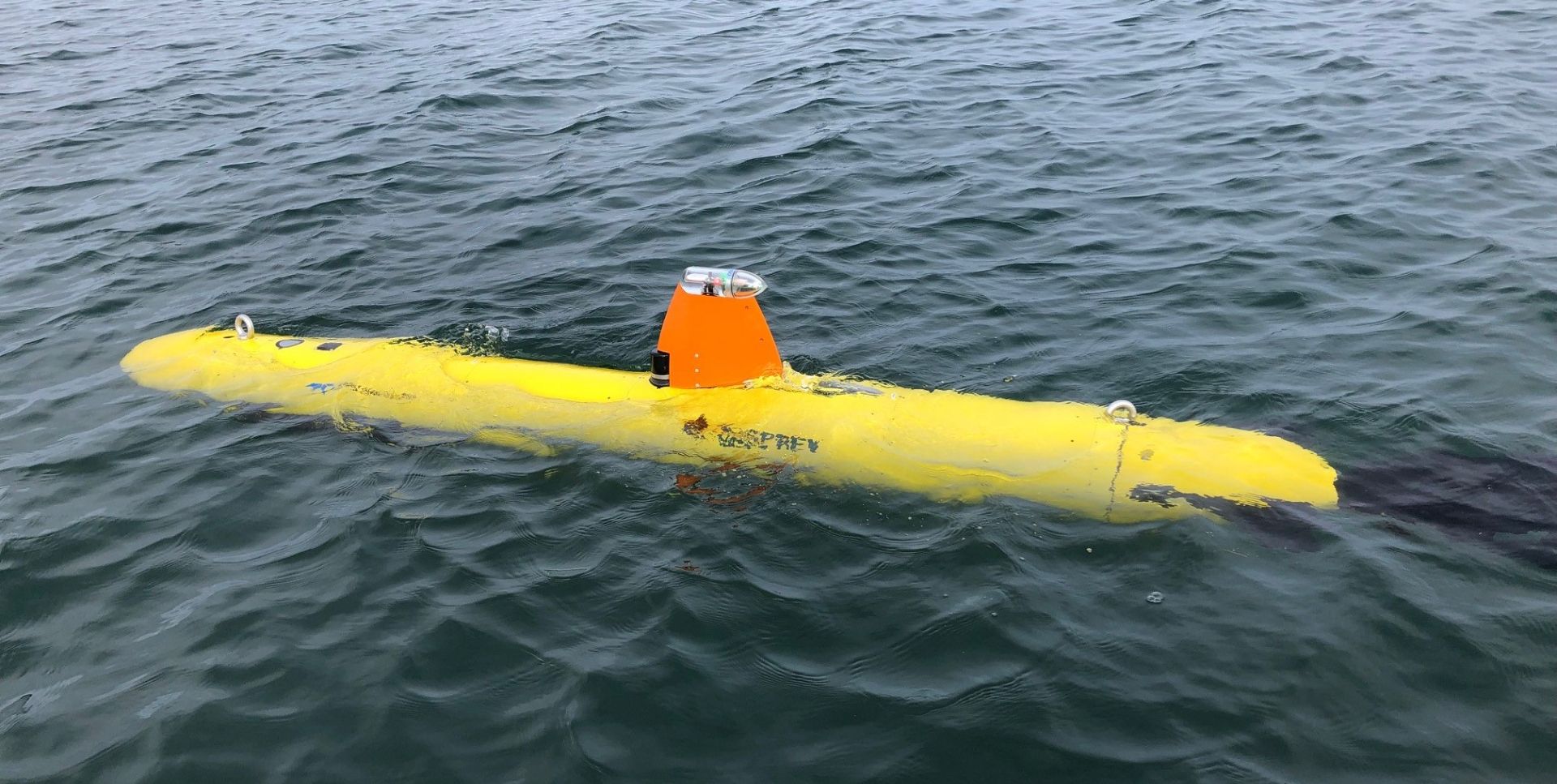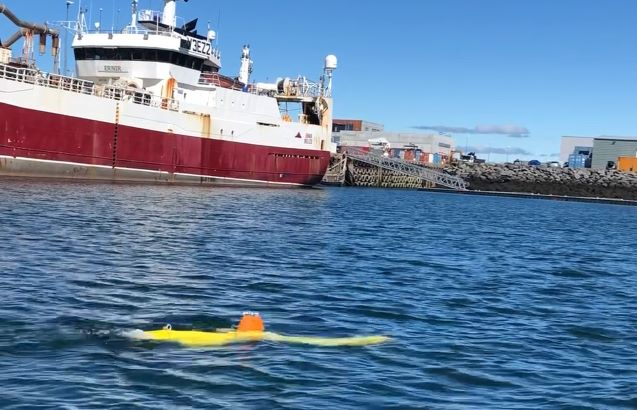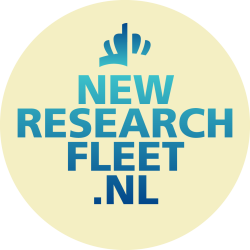AUV New Research Fleet
Acquisition of the Autonomous Underwater Vehicle (AUV) is being done with a grant from the NWO Large-scale Scientific Infrastructure (NWO-GWI), awarded in 2020 to a broad nationwide marine research consortium of universities, institutes and TO2 institutions.
The new AUV is being built by the Icelandic company Teledyne Gavia, which stands out for its modular design and construction of these types of vehicles. After a tendering process, a medium-sized AUV of the Osprey model was selected. The vehicle has a depth range of 2,000 meters, can operate underwater for 24 hours at a time and can be equipped with modules that hold a variety of sensors.
After delivery in 2025, the AUV will greatly enhance the Dutch scientific research in oceans and on ocean floors. The device can be flexibly deployed for precise measurements and high-resolution visualisations. At the time, funding for this kind of innovative research equipment was a condition that enables the overall renewal of the Dutch research fleet.

New modular AUV for Dutch marine research community
Publication date: Wednesday 16 November 2022
This week, the contract has been signed for the manufacturing of an autonomous underwater vehicle. After delivery in 2024, the AUV will greatly enhance Dutch scientific research in oceans and on the sea floor. The device can be deployed autonomous and flexibly for precise measurements and high-resolution visualisation. Funding was obtained by a national consortium and the innovative research equipment provided the first steps towards the overall renewal of the Dutch research fleet.

~~ for Dutch scroll down ~~
Acquisition of the Autonomous Underwater Vehicle (AUV) is funded through a grant from the NWO Large-scale Scientific Infrastructure (NWO-GWI), awarded in 2020 to a broad nationwide marine research consortium of universities, institutes and TO2 institutions. Project leader Gert-Jan Reichart: "This is step 2 in a series of research equipment renewals. Step 1 was the purchase of new gliders, which will soon see their first deployments. For step 3 will start soon looking at a full ocean depth remotely operated vehicle, an ROV."
Unique modular system
The new AUV will be built by the Icelandic company Teledyne Gavia, which stands out for its modular design and construction of these types of vehicles. After a tendering process, a medium-sized AUV of the Osprey model was selected. This vehicle has a depth range of 2,000 meters, can operate underwater for 24 hours at a time and can be equipped with modules that hold a variety of sensors.
Project manager Marck Smit welcomes the collaboration with Teledyne Gavia. "This company was chosen after surveying the specifications with the marine research community. Teledyne is a company with scientific origins that has grown on and built up a lot of expertise over 25 years. Their modular system is unique.
Teledyne director Stefan Reynisson says: "The modules we work with allow a scientist to put together the vehicle he or she needs at that moment at sea. One can add modules that contain O2, CO2 and CTD sensors as required and take velocity measurements. Next to that, the modules allow you to replace batteries quickly for a rapid turnaround of the system and get it back in the water very quickly after retrieval, and also to upgrade the device at a later stage without the need for a whole new vehicle."
Accurate imaging and navigation
The Osprey comes with equipment for accurate mapping of the ocean floor. Reynisson: "There is a multi-beam sonar system. It has up to 1024 beams that make it possible to create a three-dimensional map in high resolution. There is also a side scan that creates high resolution imagery of the seabed."
In addition, the Osprey has forward looking obstacle avoidance sonar, an acoustic modem and an internal navigation system. "This enables accurate navigation and identification of underwater objects, allowing you to reprogramme missions while the device remains underwater," Reynisson said.
Nieuwe modulaire AUV voor Nederlandse zeeonderzoekers
Deze week is de handtekening gezet onder de bouw voor een autonoom onderwatervoertuig. De AUV zal na oplevering in 2024 Nederlandse wetenschappelijke onderzoek in oceanen en op de zeebodem enorm versterken. Het apparaat is autonoom en flexibel inzetbaar voor nauwkeurige metingen en hoge-resolutie visualisaties. Financiering van de innovatieve onderzoeksapparatuur werd verkregen door een nationaal consortium en vormde de eerste stappen naar de algehele vernieuwing van de Nederlandse onderzoeksvloot.
Aanschaf van de Autonomous Underwater Vehicle (AUV) gebeurt met subsidie vanuit de NWO Groot Wetenschappelijke Infrastructuur (NWO-GWI), die in 2020 is toegekend aan een breed landelijk mariene onderzoeksconsortium van universiteiten, instituten en TO2-instellingen. Projectleider Gert-Jan Reichart: “Dit is stap 2 in een reeks van vernieuwingen van de onderzoeksapparatuur. Stap 1 was de aanschaf van nieuwe gliders, die binnenkort in gebruik worden genomen. Voor stap 3 gaan we binnenkort kijken naar een ROV, een op afstand bediend voertuig op volle oceaandiepte. "
Uniek modulair systeem
De nieuwe AUV wordt geleverd door het IJslandse bedrijf Teledyne Gavia, dat zich onderscheidt door het modulair ontwerpen en bouwen van dit type voertuigen. Na een aanbestedingsprocedure is gekozen voor een middelgrote AUV van het model Osprey. Dit voertuig heeft een dieptebereik van 2000 meter, kan 24 uur achtereen onder water werkzaam zijn en is naar keuze te voorzien van modules met een variëteit aan sensoren.
Projectmanager Marck Smit is verheugd over de samenwerking met Teledyne Gavia. “De keuze voor dit bedrijf is gemaakt na inventarisatie van de specificaties bij de mariene onderzoekscommunity. Teledyne is een bedrijf met wetenschappelijke oorsprong dat is doorgegroeid en in 25 jaar veel expertise heeft opgebouwd. Hun modulaire systeem is uniek.”
Teledyne-directeur Stefan Reynisson: “De modules waarmee wij werken, zorgen ervoor dat een wetenschapper het voertuig kan samenstellen dat hij of zij op dat moment op zee nodig heeft. Men kan naar wens de modules toevoegen die O2-, CO2- en CTD-sensoren bevatten en snelheidsmetingen uitvoeren. Daarnaast maken de modules het mogelijk om snel batterijen te vervangen en het apparaat snel weer te water te laten, maar ook om het apparaat in een later stadium te upgraden zonder dat een heel nieuw voertuig nodig is.”
Nauwkeurige imaging en navigatie
Met de Osprey wordt apparatuur meegeleverd voor het nauwkeurig in kaart brengen van de oceaanbodem. Reynisson: “Er is een multi-beam sonarsysteem. Dat heeft tot 1024 stralen, die het mogelijk maken om een driedimensionale kaart te maken in hoge resolutie. Ook is er een side scan die HR-beelden maakt van de zeebodem.”
Daarnaast beschikt de Osprey over forward looking sonar om obstakels te ontwijken, een akoestische modem en een intern navigatiesysteem. “Dat maakt het mogelijk om missies te herprogrammeren terwijl het apparaat onder water blijft”, aldus Reynisson.
Marien geoloog Furu Mienis ziet veel nieuwe onderzoeksmogelijkheden. “Met de AUV kunnen we delen van de diepzeebodem van dichtbij en daarmee veel nauwkeuriger dan vanaf het schip in kaart brengen, terwijl we gegevens uit de omgeving verzamelen. Dit biedt veel mogelijkheden om onbegaanbare plekken in de diepzee in detail te bestuderen.”
Bewezen concept
De Osprey is de spiksplinternieuwe tussenvariant van twee al bestaande modellen van Teledyne, de kleinere Gavia en de grotere SeaRaptor, vertelt Reynisson. “Doordat we dezelfde command and control systemen, interface en algoritmen gebruiken is het een bewezen concept. De nieuwe Osprey AUV biedt wetenschappers tijdens hun mariene veldwerk een langer uithoudingsvermogen en grotere capaciteit voor het verwerken van informatie dan de Gavia, en is gemakkelijker in en uit het water te halen dan de SeaRaptor.”



